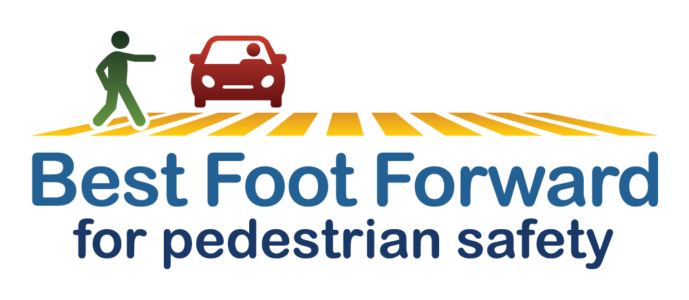As part of FDOT’s Target Zero initiative, Polk and Lake Counties have each recently selected…

Ped Safety’s Unsung Hero: BFF Data Collector Tony Calabro
Tony Calabro walks across the street. A distracted driver slams on his brakes just in time to avoid hitting Tony. The driver behind him does the same. Tires squeal and somebody honks, but Tony makes it across the street.
Most people who just experienced such a close call would—and rightfully so—wave their fist and scream at the driver. But Tony is a data collector. He takes out his clipboard and jots down some quick notes of the encounter. Then he turns around, looks both ways, and crosses the street again.
“I’ve almost been hit out there myself. I’ve been hit probably, in seven years, about five times,” Calabro said. But he’s okay: “I know how to get out of the way.”
For pedestrians, Central Floridian streets are some of the most dangerous in the nation. For Calabro, these streets are his office. He knows more than most how vulnerable pedestrians are in this region. Before becoming a data collector, he trained and supervised school crossing guards for the Orange County Sheriff’s Department for 12 years.
“I guess I’m supposed to retire from the Sheriff’s Department and not work at all and work on my suntan, but I guess not!” Calabro said, his Brooklyn accent becoming more pronounced.
Though Best Foot Forward has had several data collectors, Calabro has been part of the family from the very beginning, when former Executive Director Brad Kuhn brought him aboard.
“Since I was a trainer and a supervisor for the crossing guards, [Kuhn] said this might be a good thing for people who were very knowledgeable about crossings and that it would be a perfect fit,” Calabro said.
That was seven years ago, and Calabro’s still going strong.
“I just kept on going. I felt that it was a worthy organization, to try to get an awareness out to the people on what’s going on,” he said.
The data Calabro collects is used by Best Foot Forward to track progress toward its mission: keeping pedestrians and drivers safe by getting more drivers to stop for people walking in marked crosswalks. Calabro helps collect baseline data before law enforcement goes out for a crosswalk crackdown. He also records observations about the crosswalk: what are the markings on the street? Are the signs well-placed for drivers to see? Is there a safe place where officers and deputies can pull drivers over? Once Calabro has collected the pre-enforcement data, he recommends which crosswalks would benefit most from this event. Then BFF plans for the big day.
During Operation BFF, plainclothes officers and deputies walk across the street in the marked crosswalk. If drivers don’t stop as Florida law requires, they get pulled over and hit with at least a $164 ticket and three points on of their license.
The data that Calabro collects is also used to make engineering recommendations to city and county officials. These numbers can act as the justification they need to fund new signage, fresh paint, safety islands, or other changes to crosswalks.
“Once we install rapid flashing beacons, and we’ve installed them in a few spots that didn’t have beacons, it seems to have a good effect on the stop procedure,” Calabro said. “Now, drivers are aware—they see a flashing light, and I think that’s what helps.”
Education, enforcement, and engineering are Best Foot Forward’s three E’s for getting more drivers to stop for pedestrians. Calabro’s data most directly impacts the enforcement and engineering parts of BFF’s approach, but he is also passionate about the third “E”: education.
Educating drivers and pedestrians alike, Calabro said, is the best way to make Central Florida’s streets safer.
After years of experience, he notes that children are particularly vulnerable at crossings. Most mornings, they have a crossing guard ready to stop traffic for them with an on-demand stop sign.
“Now you have to let the children know that when they’re out there, when it’s not school time and they’re on their own, that they’re aware that there’s not going to be a stop sign, or somebody out there stopping the vehicle,” Calabro said.
Drivers should also know the impact distracted driving can have, he says.
“A lot of times you see signs, but you don’t pay attention to the signs,” Calabro said. “You can have flashing lights going off, and people are not aware of it.”
Though the dangers of his job do not escape him, Calabro is optimistic. He says that Best Foot Forward is having a positive impact on pedestrian safety.
“In the last probably year or so, it seems like more vehicles are stopping further away from where I step out there,” Calabro said. “Drivers are more aware now, of the people going out there. [Pedestrians are] stepping on the crosswalk, they have to stop.”
Since 2012 Calabro and Best Foot Forward have tracked an increase in the number of drivers stopping for people in crosswalks. Initially, only 17% of drivers stopped for pedestrians in marked crosswalks. In 2018, that number was 57% thanks to 7 years of hard work from Calabro and the Best Foot Forward coalition.








This Post Has 0 Comments